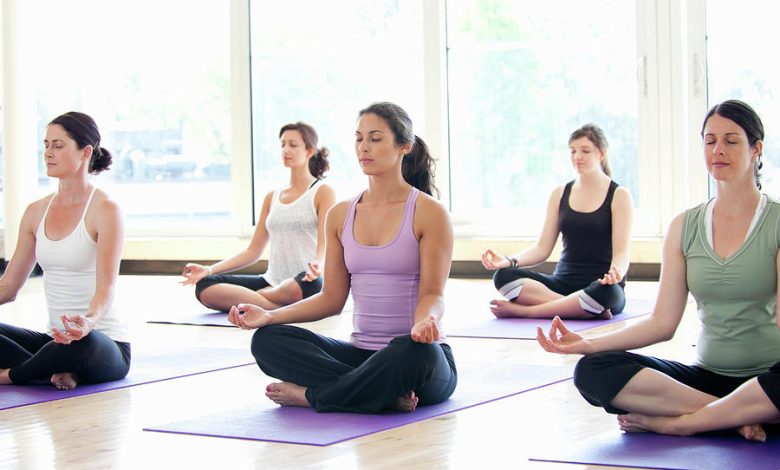The Science Behind Yin Yoga: How Deep Stretches Improve Fascia Health

Understanding Yin Yoga and Fascia Health
Modern lifestyles often involve prolonged sitting, repetitive movements, and high-intensity workouts that lead to muscle tightness, restricted mobility, and tension buildup. One effective yet often overlooked solution is Yin Yoga, a slow-paced practice that involves holding deep, passive stretches for extended periods. Unlike dynamic yoga styles, Yin Yoga primarily targets the fascia—the connective tissue surrounding muscles, organs, and joints—helping to enhance flexibility, improve mobility, and release chronic tension.
What Is Fascia and Why Does It Matter?
Fascia is a complex, web-like structure of connective tissue that runs throughout the entire body, supporting and stabilizing muscles, bones, and organs. It plays a crucial role in movement, posture, and overall well-being. Healthy fascia is hydrated, elastic, and resilient, whereas tight or dehydrated fascia can lead to stiffness, poor circulation, and chronic pain.
Key functions of fascia include:
- Providing structural integrity by holding muscles and organs in place.
- Facilitating smooth movement by reducing friction between tissues.
- Aiding in proprioception, or the body’s ability to sense its position in space.
- Supporting the nervous system, as fascia contains many nerve endings.
How Yin Yoga Influences Fascia Health
Yin Yoga is unique in its ability to target and condition fascia through long-held, passive postures. Here’s how it benefits fascia health:
- Hydrating the Connective Tissue
- Holding poses for several minutes applies gentle stress to the fascia, stimulating the production of hyaluronic acid, which retains moisture in connective tissues.
- Improved hydration keeps fascia supple and elastic, preventing stiffness and rigidity.
- Enhancing Flexibility and Mobility
- Yin Yoga gradually elongates fascia, breaking up adhesions and scar tissue that restrict movement.
- Over time, this practice increases overall range of motion and joint flexibility.
- Stimulating Myofascial Release
- Myofascial adhesions, also known as knots or trigger points, form due to repetitive stress or trauma.
- Yin Yoga helps release built-up tension, improving circulation and reducing discomfort.
- Reducing Chronic Pain and Inflammation
- Chronic pain is often associated with tight fascia and muscular imbalances.
- By stretching and decompressing deep tissues, Yin Yoga alleviates discomfort related to conditions like fibromyalgia, lower back pain, and sciatica.
- Regulating the Nervous System
- Fascia contains numerous sensory nerve endings that communicate with the brain.
- Yin Yoga activates the parasympathetic nervous system (rest-and-digest mode), reducing stress, anxiety, and nervous tension.
Best Yin Yoga Poses for Fascia Health
Certain Yin Yoga postures effectively target and release different areas of the fascia system. Here are some of the best poses:
- Bananasana (Reclined Side Stretch)
- Stretches the side body and spine.
- Opens intercostal muscles for better breathing and circulation.
- Dragon Pose (Deep Hip Opener)
- Targets hip flexors and quadriceps.
- Releases tightness in the lower body fascia.
- Butterfly Pose (Seated Hip Stretch)
- Encourages a deep release in the inner thighs and lower back.
- Improves circulation in the pelvic and abdominal region.
- Caterpillar Pose (Forward Fold)
- Stretches the hamstrings, lower back, and spine fascia.
- Promotes spinal flexibility and relieves sciatic nerve discomfort.
- Sphinx Pose (Gentle Backbend)
- Opens the chest and shoulders, counteracting the effects of poor posture.
- Helps decompress spinal fascia for better alignment.
Tips for Maximizing Fascia Release Through Yin Yoga
To make the most of Yin Yoga’s fascia benefits, follow these best practices:
- Hold Poses for 3-5 Minutes
- The key to deep fascial release is sustained pressure over time.
- Avoid rushing through poses; instead, surrender into them.
- Use Breathwork to Enhance Relaxation
- Deep breathing promotes oxygen flow to fascia, aiding in relaxation and tissue repair.
- Focus on slow, steady exhales to deepen each stretch.
- Engage in a Consistent Practice
- Practicing Yin Yoga 2-3 times per week maintains fascia hydration and flexibility.
- Consistency leads to long-term improvements in mobility and pain relief.
- Incorporate Myofascial Release Techniques
- Use foam rollers or massage balls before or after Yin Yoga for enhanced results.
- This combination helps break down stubborn adhesions in connective tissue.
- Listen to Your Body’s Signals
- Avoid forcing your body into discomfort—gentle stress is key.
- If a pose feels painful rather than deep, adjust your positioning.
Yin Yoga as a Long-Term Solution for Fascia Health
With its slow, meditative approach, Yin Yoga is a powerful tool for improving fascia health and overall well-being. By integrating deep stretching, breath awareness, and mindfulness, Yin Yoga not only enhances physical flexibility but also promotes mental and emotional balance. Over time, regular practice leads to reduced pain, better posture, and increased body awareness, making it an essential component of a holistic wellness routine.
For those seeking lasting relief from stiffness and tension, Yin Yoga offers a gentle yet profound way to restore, release, and revitalize the body’s connective tissues. Whether you are an athlete, an office worker, or someone recovering from chronic pain, this practice provides the tools needed for sustainable fascia health and overall vitality.



